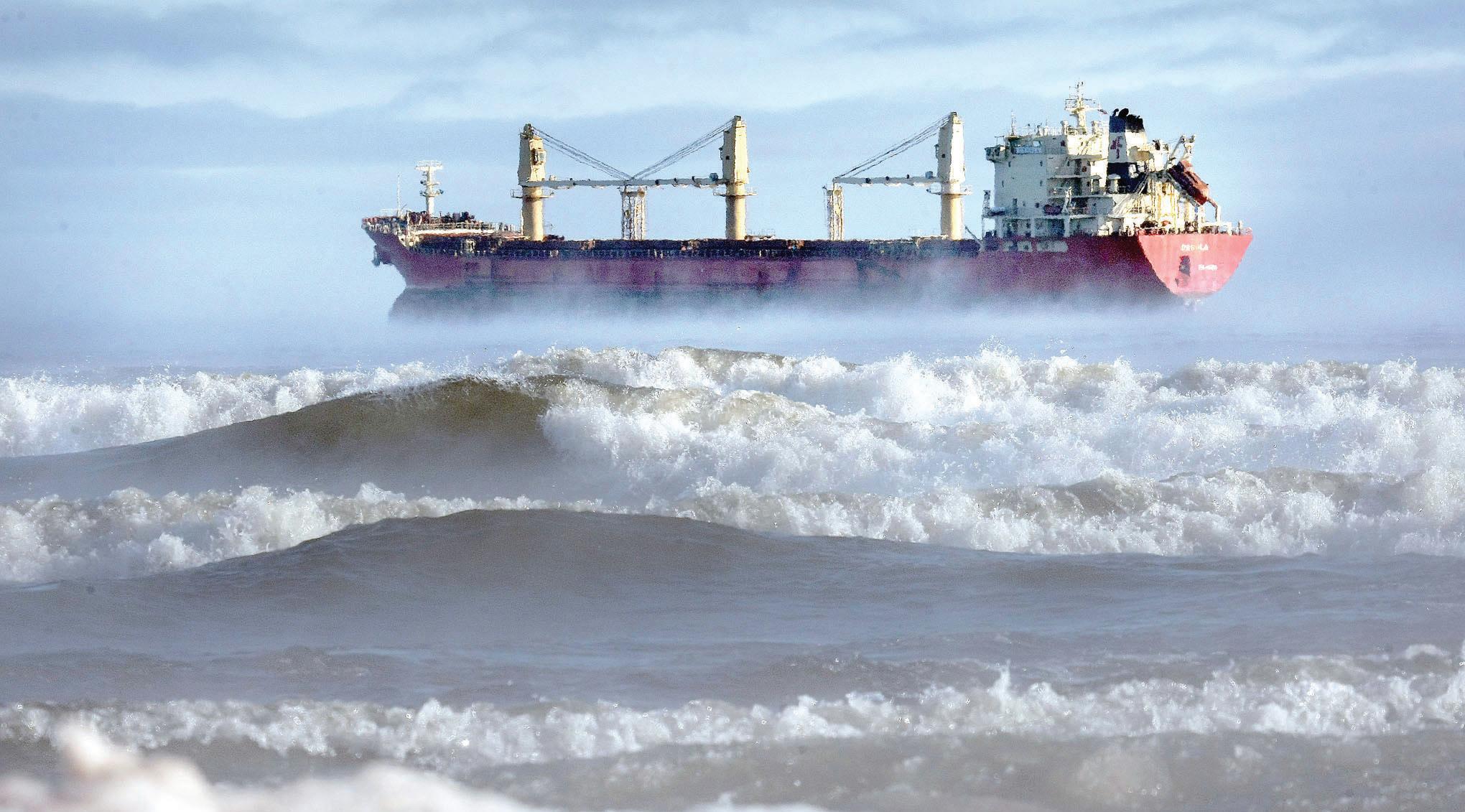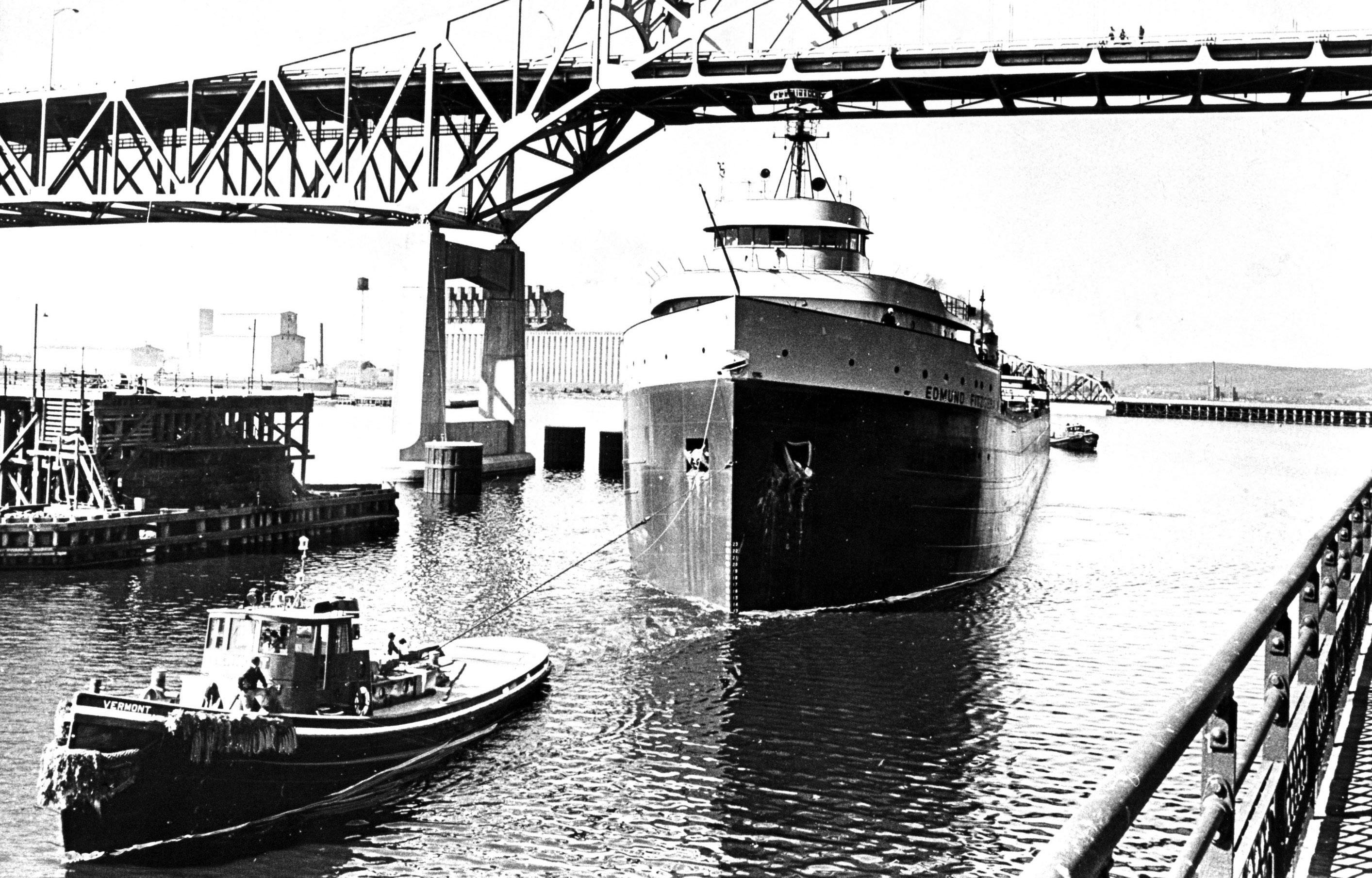
5 minute read
SAFE HARBOR Commercial sailors’ attitudes about weather changed with sinking of Fitzgerald
By Brady Slater bslater@duluthnews.com
When it comes to lake freighters and the specter of violent weather on Lake Superior, no modern event is more hardwired into our collective consciousness than the wreck of the Edmund Fitzgerald.
The Nov. 10, 1975, storm that sank the ore carrier with devastating blasts of waves cost the lives of 29 men — and forever changed the way sailors approached the lakes.
For commercial sailors, the sinking of the Fitzgerald was a game-changer on their psyches and in their decisionmaking when it came to sailing in bad weather, said the acclaimed Great Lakes author/historian Frederick Stonehouse.
“For many of the captains and their crews, the Fitzgerald was yesterday — it’s current events to them,” Stonehouse said.
There’s not been a freighter lost on the lakes since the Fitzgerald. It’s a fact that owes itself to a moredeveloped sense of self-preservation from captains and crews. Sailors on the Great Lakes are less likely to ride out storms on the open lake, more attuned to forecasts and, in general, laced with a healthier fear of an inland waterway which remains mysterious to even those most dedicated to understanding her.
Close observers of maritime traffic can see the decisions manifest on the automatic identification systems (AIS) used to track ships online.
“You notice that when you get a spot of snotty weather,” Stonehouse said, “there are a lot more ships that are hiding out for a while.”
John Swartout is a 21-year pilot on the Great Lakes, guiding foreign-flagged vessels to ports inland from the Atlantic Ocean. He used to work aboard domestic fleet ships and, in addition to the niggling reminder of the Fitzgerald, he said the aging fleets and the vessels’ diminishing capabilities help to keep sailors keen to weather events.
“The last big building boom was in the 1970s until 1981 with the last thousand-footer,” Swartout said, referring to the Paul R. Tregurtha, “so the degree of caution has crept higher over the years and people just don’t go out when there are storms.”
Ship observations
Of course, judgment is juxtaposed by the reality of corporate bottom lines. Vessels that aren’t moving aren’t earning. Tracking weather, then, becomes a mariners’ full-time obsession.
It’s an obsession aided by the National Oceanic and Atmospheric Administration and its National Weather Service with its maritime tools such as transmitting weather buoys and something called the Voluntary Observing Ship program. The Great Lakes’ VOS program is run by NOAA port meteorological officer Ron Williams, who is based in Duluth.
Williams is one of 12 such officers in the country, divided along all the nation’s coasts. He trains crews on how to use the Weather Service’s existing suite of weather websites and tools, and also how to collect the weather observations that make up the VOS program. VOS finds 90 U.S. and Canadian vessels on the Great Lakes having agreed to submit bread-and-butter basics to the Weather Service for its maritime forecasts — details, Williams said, such as wind speed, gusts, air temperatures and estimated wave heights.
“Our main emphasis is to get weather data from them in real time that gets transplanted directly to us for forecasting,” Williams said. “We have a lot of void areas on the lakes where there are no buoys or no land stations.”
Nine years ago when he started on the Great Lakes, Williams was getting 3,000 reports from vessels per year. The number surged to 10,000 in August alone this year, and an average of 90,000 reports per year. The real-time data points are key, he said, and counterintuitive to the conventional wisdom that says weather reports are drawn from satellites and other higher-power technologies.
“The reality is we really can’t put a good forecast out unless we get that raw data,” Williams said.
Even so, forecasts can still be viewed with a side eye. Both Stonehouse and Swartout said forecasting remains at least a partially elusive science.
“The data sets are much greater than they were 40 years ago, but I don’t know that the interpretations of that data is that much better,” Stonehouse said. “The Great Lakes are a unique environment in that what we think is happening isn’t always what’s happening.”
Tracking the weather
As a pilot, the Twin Portsbased Swartout said he’s the odd duck who prefers the independent life, waking up 70 nights a year aboard a ship and another 70 in a hotel room awaiting his next ship assignment. The first thing he does every morning is check the weather. During summer months, when the weather is fairly calm, he might not check it again until nearing port.
“I’m always going to look at the weather before I make plans to enter port,” he said, explaining that he wants to know any variables prior to entering the tighter squeeze of a harbor.
But the dodgier the conditions out on the open water, the more he checks — using his cellphone and websites available to any of us via the internet. In addition to the maritime forecasts of the National Weather Service,
Swartout is partial to a site called Windfinder.com. It posts a global map that illustrates wind currents with a gorgeous and hypnotic ballet of swirling graphics. Still, sometimes it’s only gorgeous, and hardly as useful as he’d expected.
“Honestly, the forecasts haven’t improved much in the years I’ve been sailing,” Swartout said, before acknowledging the struggle inherent in meteorological undertakings. “Predicting wind strength is really difficult to do. If you say 20 knots and it’s 30, all of your plans go down the drain. It’s also difficult predicting when the wind is going to change.”
Wind, for the way it produces waves, is the sailor’s No. 1 weather factor, he said, followed by fog and subfreezing temperatures. Even 10 knots of wind, or 11.5 mph worth, can begin to create significant weather considerations on the water. Crank up to 40 knots, or 46 mph winds, and the rush can elicit waves 12 to 16 feet tall which get the attention of sailors mighty quickly.
“It’s not the winds — these ships can go through hurricanes,” Swartout said. “It’s the waves that are the problem.”
Monster rogue waves, a little-understood phenomenon, can come from nowhere. Winds can blow from one direction for days and create a tide effect — called seiches — by blowing the water toward the opposite shore, creating shallower channels on the side of the wind direction and dicey situations for freighters fully weighted down by, say, a load of taconite iron ore.
Fog isn’t necessarily an issue on the open lake, but can play havoc when a vessel is navigating tight spots in port. And subfreezing temperatures form ice and, mixed with waves, can spray vessels to the point they’re carrying hundreds of extra tons of ice on deck, risking a vessel bottoming out. Aboard vessels without steam plants to produce hot water used to deice, Swartout has seen crews “out on deck with baseball bats and crowbars” to clear the ice, he said.
In addition to websites, sailors can turn their radios to Channel 16, a hailing and distress frequency upon which the U.S. Coast Guard will broadcast severe weather warnings.
Officially, the sources said there aren’t any maritime laws or rules that dictate when a vessel can or cannot proceed in weather. Swartout said fleet companies sometimes have their own standards for bad weather sailing. And the foreign captains he encounters will almost always take his advice on when or when not to proceed.

Since the Edmund Fitzgerald, an unwritten rule of the Great Lakes has prevailed: a mentality that says “better safe than sorry.”
“They’re taking shelter,” Stonehouse said of captains and crews, “when in years previously they’d be gutting it out.” u









